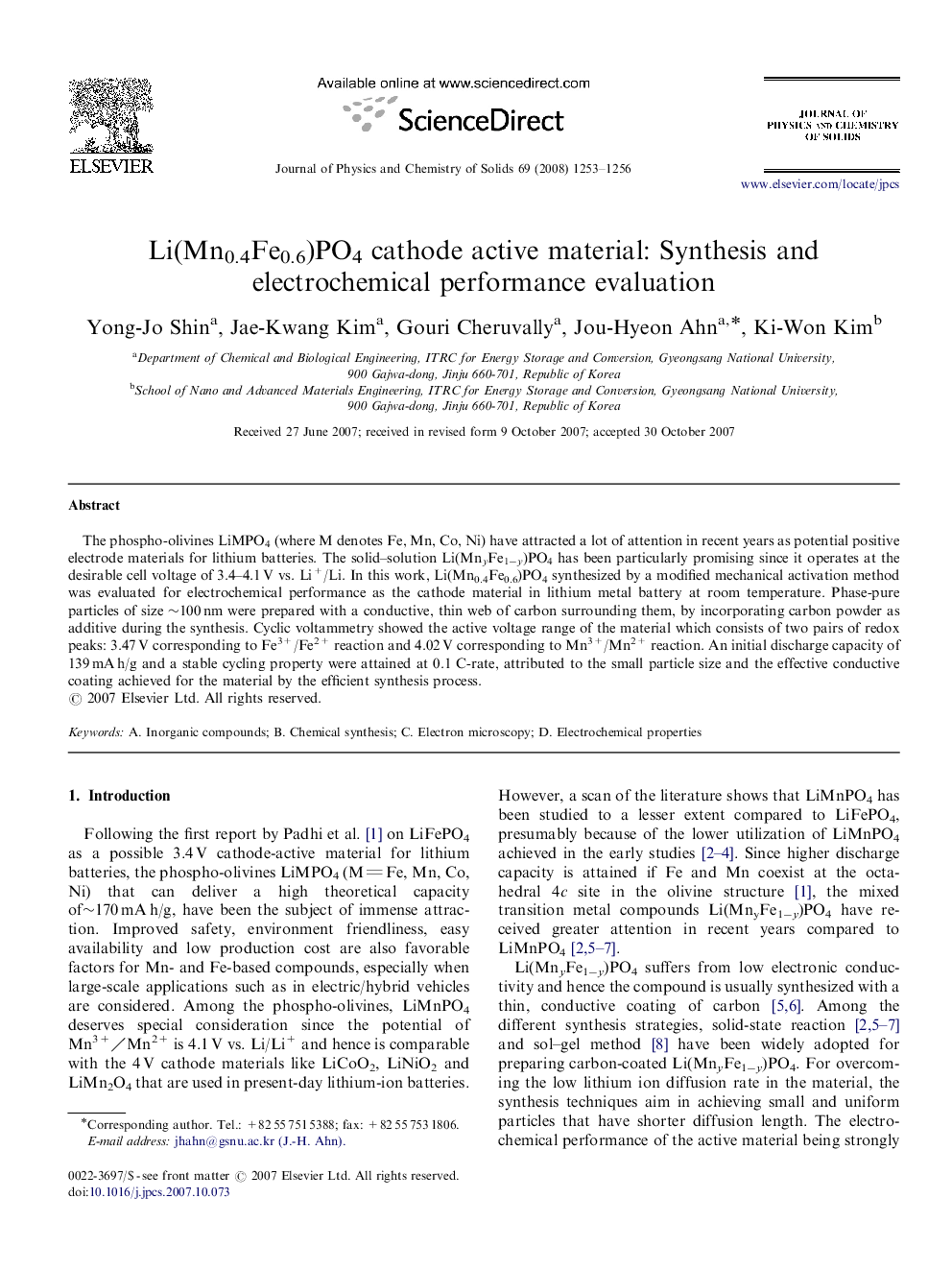| Article ID | Journal | Published Year | Pages | File Type |
|---|---|---|---|---|
| 1517563 | Journal of Physics and Chemistry of Solids | 2008 | 4 Pages |
The phospho-olivines LiMPO4 (where M denotes Fe, Mn, Co, Ni) have attracted a lot of attention in recent years as potential positive electrode materials for lithium batteries. The solid–solution Li(MnyFe1−y)PO4 has been particularly promising since it operates at the desirable cell voltage of 3.4–4.1 V vs. Li+/Li. In this work, Li(Mn0.4Fe0.6)PO4 synthesized by a modified mechanical activation method was evaluated for electrochemical performance as the cathode material in lithium metal battery at room temperature. Phase-pure particles of size ∼100 nm were prepared with a conductive, thin web of carbon surrounding them, by incorporating carbon powder as additive during the synthesis. Cyclic voltammetry showed the active voltage range of the material which consists of two pairs of redox peaks: 3.47 V corresponding to Fe3+/Fe2+ reaction and 4.02 V corresponding to Mn3+/Mn2+ reaction. An initial discharge capacity of 139 mA h/g and a stable cycling property were attained at 0.1 C-rate, attributed to the small particle size and the effective conductive coating achieved for the material by the efficient synthesis process.
